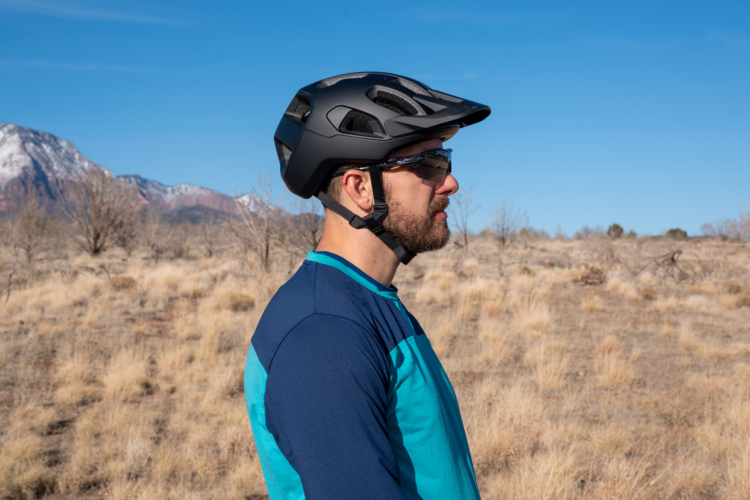
Do you have a beloved older bike hanging around that you wish handled a little closer to modern whips? Maybe your bike isn’t so old, but you want to try a slacker front end to see how it alters the ride experience. Fortunately, there are a few options available to lean your fork back by a full degree or two — provided your frame uses a pressed-cup headset.
My size medium 2016 Surly Karate Monkey frame fell hard into the “old-school geo” camp, with its 71.5° headtube angle, 73° seat tube angle, and 415mm reach. I largely use the bike for dirt road training rides when the trails are soaked, but I plan to bring it along on some lighter bikepacking adventures this summer, so a little geometry shift seemed like a worthwhile upgrade.

There are a handful of brands that make angle-adjust headsets and I chose one machined in the UK by Superstar Components with 2° of added lean. The headset includes all the usual components: two cups, two bearings, a crown race, top cap and preload bolt, star nut, compression shim, and dust cap.

The difference between this and a traditional symmetrical headset is that the holes where the bearings seat are offset and tilted to give the fork steerer a clean new angle while maintaining proper interaction with the bearings. The top bearing is seated a little toward the rider and angled accordingly, and the lower bearing seats away from the rider, creating the desired final angle. To make the headset angle steeper, simply install the angle-adjust set with the alignment markers on the opposite side.

Installing the angle set was as easy as any other, apart from the fact that you have to line it up precisely. There is a notch on the front side of both bearing cups that needs to align with the cross-section of the frame, and with the adjacent cup. I struggled to tighten my saddle in a straight-forward position the first time around, so this alignment task took a few tries. Once the cups were pressed into the head tube the whole thing went together without a hitch.
The photos below show the bike before and after installing the angle-adjust headset.


The geometry shift is hardly noticeable by looking at the bike, but it’s immediately noticeable while pedaling around. The steering is a little slower and feels slightly heavier in my hand, and the overall position is more upright given the shorter reach. These are exactly the changes I was aiming for. The slacker head tube angle will make the bike handle a little better on descents, and the shorter reach makes up for the Syncros Fraser integrated stem that was too long for this bike.
| Before | After |
| Headtube angle 71.5° | 69.5° |
| Reach 415.1mm | ~395.1mm |
| Seattube angle 73° | ~73.5° |
| BB Height 295mm | ~292mm |
I had hoped that the BB would drop more, readying the bike for a 120mm fork if I ever wanted to mount one up, but at only a few millimeters lower I definitely won’t be over-forking this bike. As the front axle extended forward the seat tube steepened slightly, which is always an appreciated change. I may slide the saddle back a touch to find the right fit once I get a chance to take the bike out for a proper long ride.
If you’re dreaming of inexpensive ways to refresh your bike, this option makes a significant difference for around fifty dollars/euros. Headset style is an element worth considering for some forks when buying a new frame, as drop-in-bearing or integrated headsets don’t leave space for angle adjustment.





















14 Comments
Apr 15, 2020
Sep 30, 2021
it's typically minor - the author clearly couldn't notice it, but the trend is the reverse of what's stated here.
Sep 30, 2021
Sep 30, 2021
https://madscientistmtb.com/bike-geometry-calculator/
Apr 15, 2020
Apr 16, 2020
Apr 16, 2020
Apr 19, 2021
Apr 18, 2021
I'm toying with the idea... not going to say the brand, of slackening the HT one degree. The bike in question, already has a tidy 337 BB, so any lower and I will hang up on everything. Luckily, I'm riding this bike in the 'low' position already... I can steepen things a degree by setting the bike in the high position...
Picking up what I'm laying down?
Slacken the HT... This steepens the STA and lowers the BB, standover, stack.
Set bike in high position... Returning HTA to original, Steepening STA (even further), bumping back up the BB, standover, stack (ever so slightly).
The benefit?
Longer WB and steeper ST. Rider forward geometry.
But again, how much longer would a bike be?
Apr 19, 2021
Apr 16, 2020
Apr 16, 2020
Apr 16, 2020
May 20, 2020